Growing hydroponically at home has many benefits. They are a regular supply of fresh, nutritious produce that will save many trips to the supermarket. Hydroponic gardening involves growing plants in a solution of water and nutrients without using any soil.
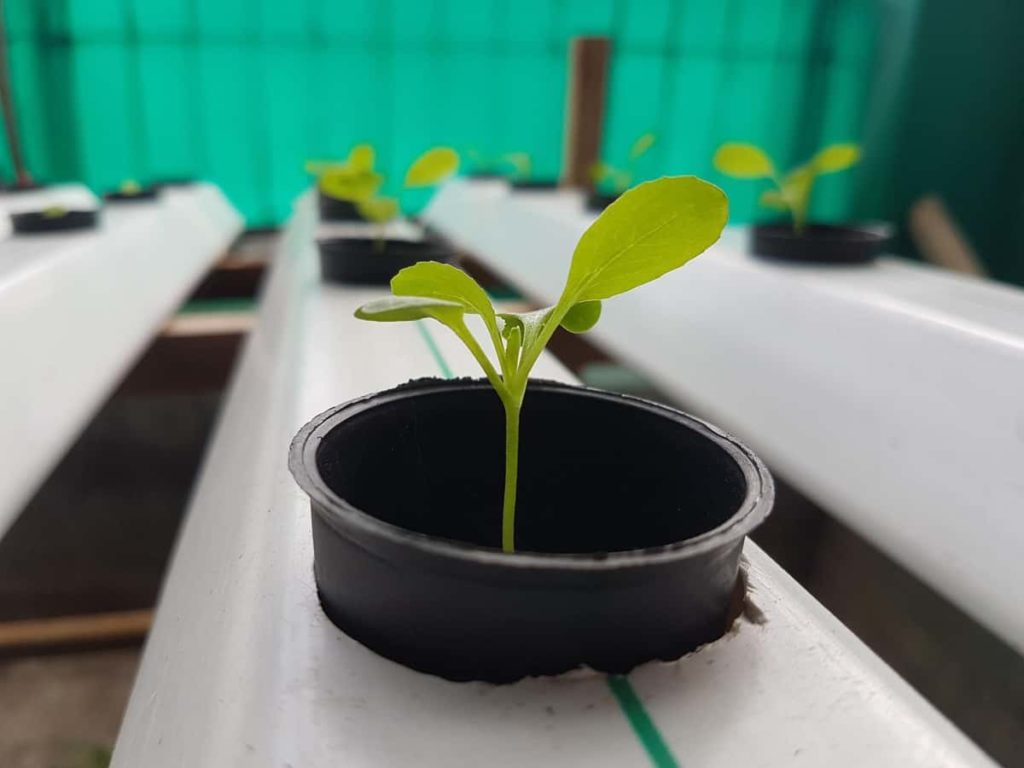
Home Hydroponic farming for beginners
What is hydroponics?
- Essentially, growing plants without the use of traditional dirt media and the use of nutrient-rich water solutions. That medium ranges from fiberglass to sand and clay pellets to nothing. The many branches of hydroponics include aeroponics (using air as the growing medium), aquaponics, etc.
- Hydroponics has been adopted as a commercial farming method in many parts of the world and has become an established branch of agricultural science.
- Hydroponic plants can give you high yields in a tiny space and on an economical budget. However, your investment for commercial farming will be many times higher than for hydroponic plants. Also, many people prefer hydroponic farming because it can be more easily ensured to be organic and use fewer chemicals and pesticides.
- Hydroponics can be a fun and rewarding hobby that provides you and your family with quality products.
What are the benefits of hydroponics?
- Better plant yield: Hydroponic plants produce higher yields of fruits and vegetables because plants in a hydroponic system are spaced more closely together than the size of the land needed to grow the same number of plants.
- By providing constant and readily available nutrients, hydroponics allows plants to grow 50% faster in soil. Also, fresh produce can be obtained from a hydroponic garden year-round.
- Hydroponic gardening eliminates the need for herbicides and pesticides, which are great for both the environment and the produce grown.
- Any water used in hydroponic gardening stays in the system and can be reused, reducing the need for a constant fresh water supply.
- Better plant production: Hydroponic plants produce higher yields of fruits and vegetables because plants in a hydroponic system are spaced more closely together than the size of the land needed to grow the same number of plants.
- Less space: Hydroponic come in various designs, including vertical stacking systems that take up little space.
What is the equipment used in hydroponics?
The equipment you need for hydroponics is water. As the word “hydroponics” implies, you’ll need water for your plants—and a lot of it, at once. Other equipment used in hydroponics are;
- Water basin
- Light
- Grow trays and tables
- Fertilizers or nutrients
- Growing medium
- Growing chamber
- Reservoir
- Submersible pump
- Air Pumps
How do you start hydroponic farming at home?
- Choosing plants and starting your seeds
- Select a light source
- Hydroponic system going to use
- Choose a hydroponic grow medium
- Get hydroponic nutrient solution ready for starting seeds
- Put the seeds in the growing medium
- Buy a pH meter and pH up/down
In case you missed it: How to Start Hydroponic Farming/Gardening from Scratch in India: A Step-By-Step Guide for Beginners
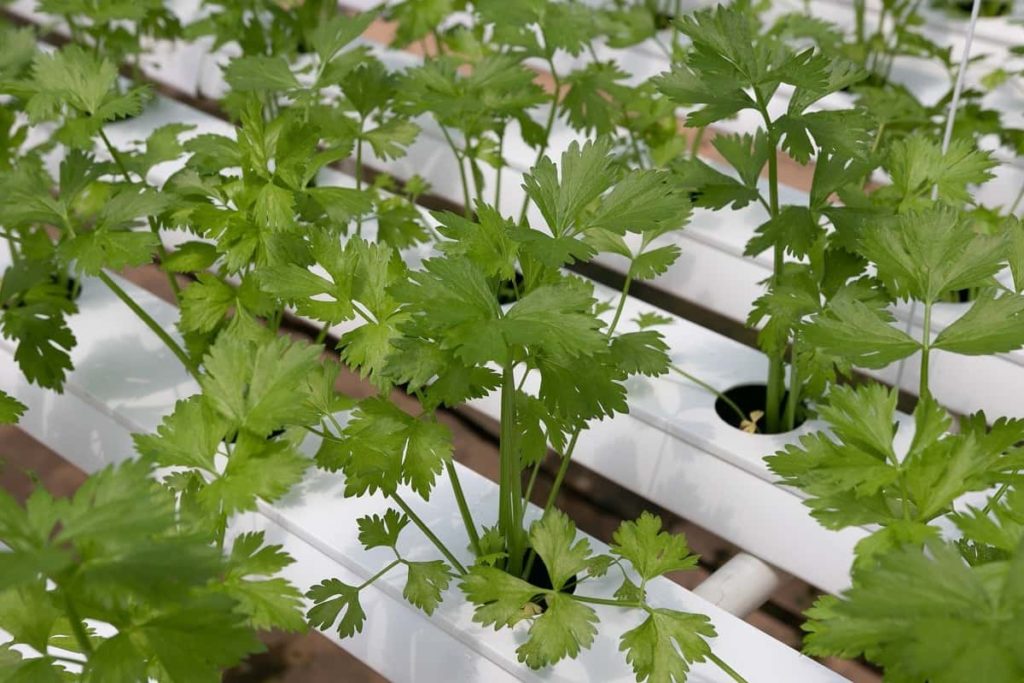
Can you grow garlic in hydroponics?
- Growing garlic hydroponically is an easy and successful method to grow. Once you get going, however, you can continue to plant cloves from your existing bulbs for a more or less self-sufficient crop.
- Garlic can be grown in various ways, but many believe hydroponics is the best method. It mainly allows plants to grow faster and more efficiently than any other method. This continuous fertilization also leads to significantly higher yields than soil. All these benefits extend to garlic as well.
- Garlic can be grown in a hydroponic as long as the plants have a suitable substrate and strong artificial light, and the gardener understands how to take them out of their natural life cycle. Garlic also needs additional nutrients to sustain its growth.
What seeds grow fastest for hydroponics?
The fast-growing plants that will thrive in a hydroponic system are Mustard Greens, Swiss chard, Spinach, Kale, and Watercress, and you can start harvesting them within a month of planting.
Tips for growing plants faster in hydroponics;
- Pay attention to temperature – the temperature of your ingredients is important. When the temperature becomes too high, the dissolved oxygen level from the aerators decreases.
- Stagnant water is not helpful water – When it comes to hydroponic reservoir water, how often you do water changes depends on the system and your preference. There are many opinions, so it’s best to try and find the way that works for you. Some people recommend changing the nutrient solution weekly or bi-weekly. Some may hold off longer than a week or two.
- Use an EC Meter – An EC meter will become one of your best friends in maintaining a hydroponic reservoir. These EC meters will give you an idea of the amount of fertilizer in the water. Remember, plants don’t take up nutrients at the same rate, so if you “top off” your system (add some solution to the reservoir), it can cause some minerals to build up. When you completely change the solution and use an EC meter, you will help retain nutrients.
Does hydroponics need electricity?
Pumps and machines used in hydroponics use relatively little electricity compared to lighting costs. Still, even less-used appliances will add to utility bills. Ultimately, the consumer inherits the high electricity cost of hydroponic gardening.
How much cost does it take to start a hydroponic farm?
The total cost of a hydroponic farm is Rs.5 to Rs.8 lakh. The setup cost for a hydroponic farm will be 110 lakhs to Rs.150 lakhs in one acre of land, excluding the price of land.
Can you grow hydroponics at home?
Hydroponics is easy to start in your home, so you can grow year-round. You can create many different garden styles, the most common being wick systems, deep water cultures, and nutrient film techniques. With simple construction, you can easily have a garden in your home.
Are hydroponic vegetables healthy?
- In their sprouting stages, seeds are the most nutritious because of the concentration of all nutrients.
- Hydroponically grown sprouts are even healthier because they get healthy nutrients from a water solution. And thus, sprouts can provide you with plenty of nutrition even when consumed in small amounts.
What are the 6 types of hydroponics?
There are six types of hydroponics to consider for your garden:
- Wick – Plant roots grow down through a medium while an absorbent “wick” transports nutrient-rich water from the water reservoir to the zone of the root system. In addition, a growing medium allows air (oxygen) to reach the roots.
- Deep Water Culture (DWC) – Deep water culture (DWC) is the most straightforward system for most growers to maintain. It consists of a reservoir filled with water and nutrient solution. Plants are hung above the reservoir using a mesh pot and growing media. The roots are submerged in the reservoir, so they have a constant water supply and nutrients. Plant roots need oxygen. Suppose you used an air pump with an air stone to pump bubbles into the reservoir to oxygenate the water and then deliver the oxygen to the roots. DWC is inexpensive and low-cost to maintain. Maintenance is low and only requires a reservoir, suspension system, and basic air pump. This process is recirculating, which means less waste and more cost savings.
- Ebb and Flow – Plant roots grow medium. Nutrient-rich water is pumped repeatedly (e.g., every 30 minutes) into the root zone area and allowed to return to the water reservoir.
- Nutrient Film Technique (NFT) – Plants are placed on a floating surface suspended in a slightly inclined trough. Plant roots hang down with the upper part of the root system exposed to air (oxygen). The lower part of the roots is exposed to nutrient-rich water that is poured into the trough at the upper (higher) end. Water flows back into the water reservoir through other root systems (downstream). The Nutrient Film Technique (NFT) provides a thin film of nutrients to plant roots. The water and nutrient solution are kept in a large reservoir, with an air pump and air stone for oxygenation (such as a DWC system). However, unlike the submerged roots of DWC, the plants of the NFT system are grown in a close channel (in net pots).
- Aeroponics – Plant roots are placed in an enclosed space and exposed to air (oxygen) where, periodically (e.g., every 30 minutes), nutrient-rich water is flowed through the enclosure or sprayed by mist.
- Drip – In a hydroponic drip system, an aerated and nutrient-rich reservoir delivers solutions to individual plants through a network of tubes. It is slowly dripped into the growing media around the root system, keeping the plants moist and well nourished. It is the most popular and widespread hydroponics method, especially among commercial growers. Drip systems can be individual plants or large-scale irrigation works.
In case you missed it: Hydroponic Farming in USA: How to Start, a Guide for Beginners
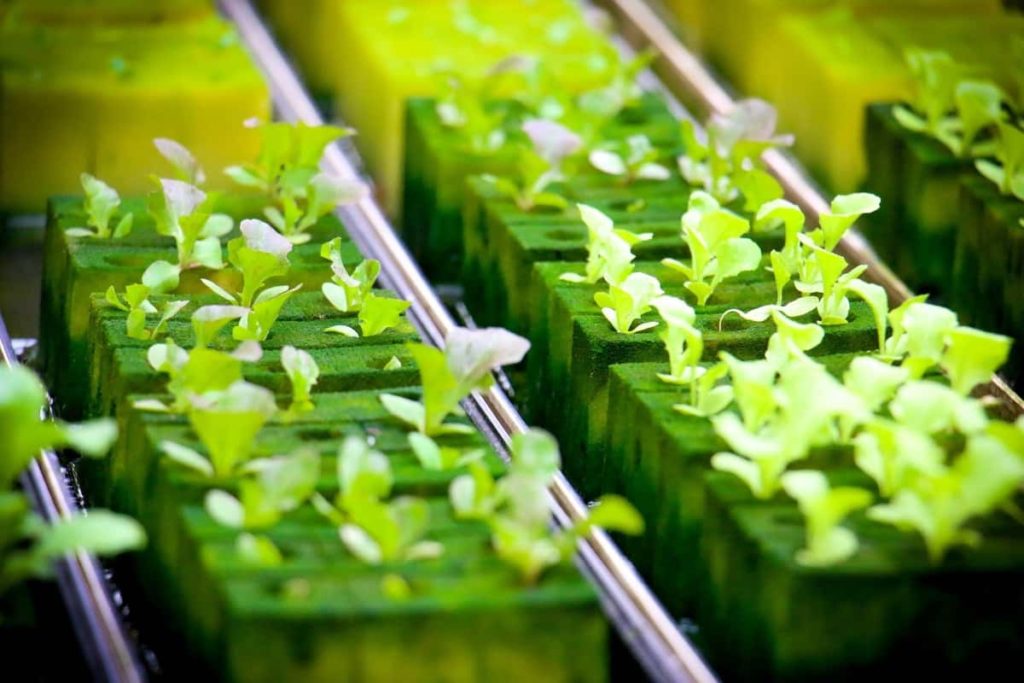
Does hydroponics need sunlight?
Hydroponics requires light, but not necessarily sunlight. You can grow plants hydroponically outdoors or in a greenhouse, where your plants naturally get all the light they need. Or, if you have an indoor space with plenty of natural light, this will work too.
What plants can be grown in hydroponics?
- The most common crops are Leaf Lettuce, Tomatoes, Strawberries, Watercress, Peppers, Cucumbers, Celery, and some herbs.
- An important factor in system design for a particular crop is its support of nutrient solutions.
What nutrients do I need for hydroponics?
- Hydroponic growing plants are exposed to light to allow photosynthesis, and the plant’s roots are exposed to air, allowing the roots to get the oxygen they need to grow.
- In some hydroponic systems, a growing medium supports plant roots and allows more efficient water absorption into the root structure. One type of growing medium that is commonly used is coconut coir – a shredded fibrous product made from coconut husks.
- A subset of hydroponics, known as aeroponics, requires only light, water, and nutrients and uses no growing medium.
- To be ‘complete,’ a hydroponic nutrient must contain the essential elements for plant growth: Nitrogen (N), Potassium (K), Phosphorus (P), Magnesium (Mg), Sulfur (S), Calcium (Ca), Iron (Fe), Manganese (Mn).
- Hydroponic nutrients can last 7 – 10 days, assuming you extract, clean, and re-mix your nutrients and flush the system daily with plain water. Do it from the top. Nutrient strength will decrease as plants absorb nutrients in the system.
How should you add nutrients to the hydroponics system?
If you drain, clean, and re-mix the nutrients every 7 to 10 days, it is fine to top up fresh water daily. As plants use nutrients and water, the nutrient strength in the hydroponic reservoir will change. Generally, nutrient strength should be between 800 and 1500 parts per million (ppm).
Is hydroponics better than soil?
- According to statistics, plants grown in a hydroponic setup are healthier, more nutritious, grow faster, and have higher yields.
- If you compare the yield of hydroponic plants to soil-grown plants, hydroponically grown crops yield 20-25% more than soil-grown crops.
What is the easiest hydroponic system?
- Deep water culture (DWC) is the simplest type of hydroponic system that you can build and maintain at home. In this system, plants grow by immersing their roots directly in nutrient-rich water.
- For home gardeners, this can be achieved by growing in large opaque storage containers or buckets. The lack of recirculating water makes constructing DWC systems relatively simple and inexpensive.
- In DWC systems, the water is not recirculated; it sits in the reservoir for the plant’s entire life. It means you must aerate the water to replenish the oxygen used by the roots. In the soil, air pores provide much-needed oxygen to the roots, and in recirculating hydroponic systems, aeration is provided as water is pumped around.
- DWC system runs an air pump with an air stone (used in fish tanks) to keep the water oxygenated.
- In DWC systems, the best crops to grow are Lettuce, Kale, Chard, Bok Choy, Basil, and Parsley. These are all plants that are not too heavy. However, in DWC systems, the plant roots are not well anchored, so growing tall plants such as tomatoes can be difficult; if you grow them, you will need the right support to keep the plant upright.
How fast do tomatoes grow hydroponically?
- How much time it takes to grow tomatoes hydroponically depends on which cultivar you choose and whether you start from seed or seedlings.
- On average, tomato seeds will take ten days to germinate and four to six weeks to reach the transplanting stage.
What are the 5 disadvantages of hydroponics?
- Expensive to set up
- Vulnerable to power outages
- Requires constant monitoring and maintenance
- Waterborne diseases
- Problems affect plants quicker
In case you missed it: Hydroponic Farming in Bangalore: How to Start, Setup Cost, Companies, and Suppliers
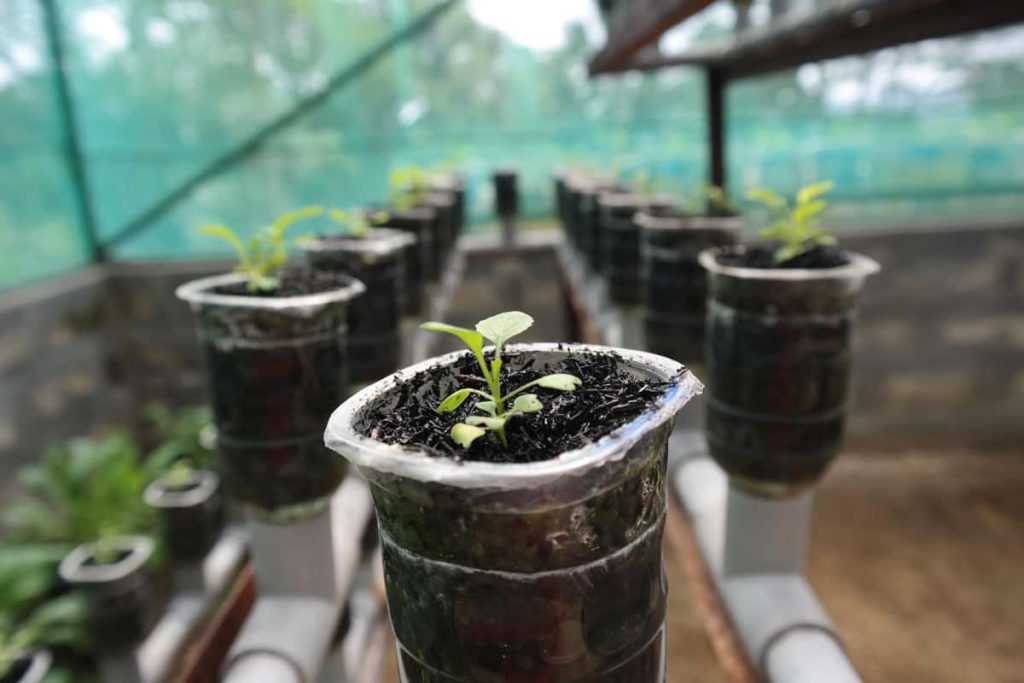
Why are my hydroponic plants growing so slowly?
The pH level of nutrient solution is one of the most important aspects of hydroponic growing. When growing plants, the soil acts as a pH buffer and prevents rapid changes in pH levels. It means that pH problems are slower to develop and more easily.
Can you grow onions hydroponically?
- You may wonder if you can grow onions hydroponically – and it’s relatively easy.
- Onions are one of the easiest plants to grow in a hydroponic system.
Are hydroponic plants healthy?
Most hydroponic systems do not require pesticides. Pesticides not only have negative effects on health. They can damage local ecosystems by damaging soil, killing nearby plant life, and even endangering animals (such as birds). Hydroponic systems do not require topsoil, so there is no risk of topsoil erosion.
What is the best temperature for hydroponics?
In all hydroponics systems, water temperature is critical. The ideal water temperature level for hydroponics is between 18 and 26°C.
Can I use regular fertilizer for hydroponics?
- Yes. Firstly, you must completely avoid products containing N, primarily urea or ammonium. Products useful for your hydroponic growing will be completely water soluble and contain either nitrogen only as nitrate or no nitrogen at all.
- Add a good-quality, water-soluble fertilizer every time you change the water – usually every four to six weeks, if half the water evaporates. Use a weak solution that is one-quarter the strength recommended on the fertilizer container.
Is hydroponic fertilizer safe?
- Hydroponic nutrients are safe to use. Unlike natural growing methods, hydroponic plants are not exposed to pesticides, chemicals, diseases, and pathogens.
- Hydroponic nutrient feeding is highly controlled and efficient, especially when paired with additives, substrates, and proper equipment. Many factors can cause nutrient deficiencies or toxicity in your plants. It is difficult to tell which nutrient is causing the problem or if there is a deficiency or toxicity problem.
- There are many signs to look for different nutrient deficiencies and toxicities, and you will get better at spotting problems with time and experience. Temperature, pH level, plant growth rate, nutrient solution concentration, user error, and other factors can cause nutrient problems. Don’t forget that excess nutrient levels can cause problems with the absorption of another.
- Be sure to make your nutrient solution carefully and correctly. Ensure the water you use to make the nutrient solution is not too hard. Consider diluting it with distilled water passed through reverse osmosis or an activated carbon filter to reduce dissolved solids levels.
In case you missed it: Top Hydroponics Companies in India
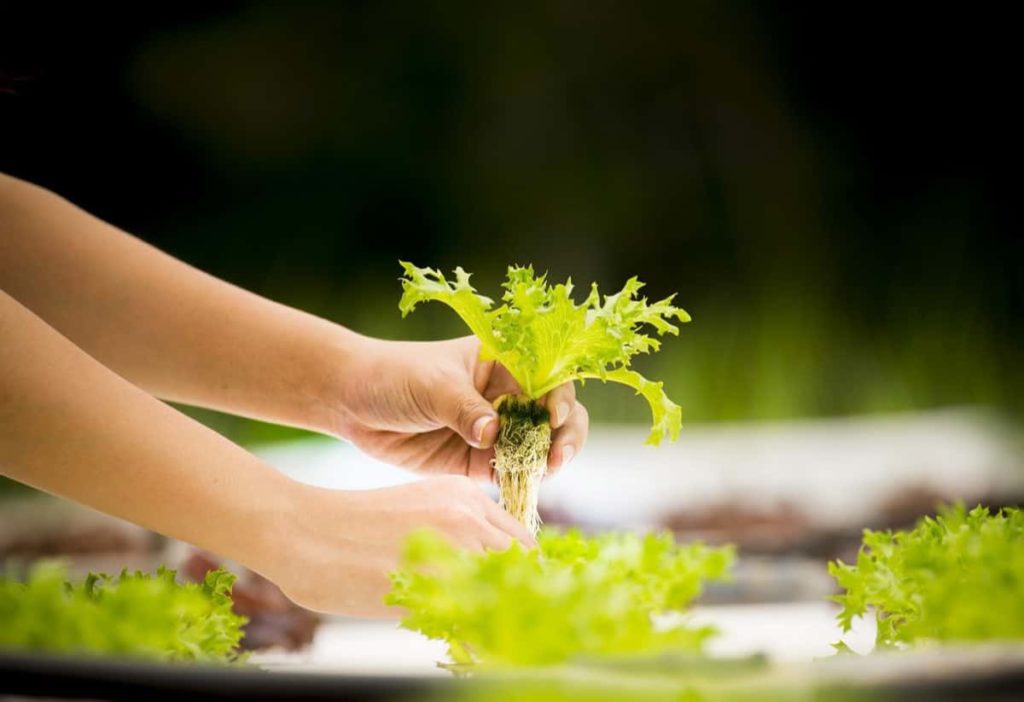
What is the minimum investment for hydroponics?
Every hydroponic expert will say that the minimum investment in a hydroponic farm would be Rs. 30 lakhs, while the maximum would go up to Rs. 4 crores.
What are the 6 requirements for hydroponics?
The six things required are light, air, nutrients, heat, water, and space. Hydroponic plants can grow well indoors or outdoors. In either setting, the plants will need five to six hours of light per day, access to electricity, and an area level without excessive wind.
Are LED lights good for hydroponics?
LED lights are becoming the go-to for hobby hydroponic growers, and a good reason. LED grow lights are more efficient overall. And they have a long lifespan. There are now many different grow lights to choose from.
Which growing medium is best for hydroponics?
- The four sources are rock wool, lightweight expanded clay aggregate, coconut fiber, and perlite. And they are used in hydroponic systems instead of soil. But growing media is not a true substitute for soil.
- Media supports plant roots and stems, like soil, but does not contain any nutrients that plants need to grow. As a result, a growing medium cannot grow a plant by itself.
- Growing media are usually porous to keep water rich in oxygen and nutrients. Although growing media is similar to soil, the nutrient solution is a true alternative. A nutrient solution is a water mixed with nutrients to promote healthy growth.
Do you need a growing medium for hydroponics?
- In hydroponics, you don’t use soil. Rather, plants are fed with a water-based mineral nutrient solution. However, they still need a growing medium, i.e., material to grow on, also known as substrate.
- These systems help plants grow through soilless growing by providing water and nutrients. Common growing media include vermiculite, perlite, coconut coir, rock wool/stone wool, clay pellets, sand/gravel/sawdust, and peat moss.
- Hydroponics removes barriers between the hydroponics plant and its nutrients. It gives the roots direct access to the water, oxygen, and nutrients they need to grow and survive. Since there is no soil, there is also no need for harmful pesticides or chemicals. There is also less risk of plant disease or exposure to external elements.
How often do you change the water in hydroponics?
- The best time to change your hydroponic water is after you’ve topped it up long enough to fill it.
- You must change your water every two to three weeks for an average-sized hydroponic system.
What is the profitable hydroponic crop to grow at home?
The profitable crops to grow hydroponically is the Basil, Cilantro, Cayenne pepper, Lettuce, Spinach, Black Pepper, Spring Onions, Mint, Strawberry, Bell Peppers, and Cucumber.
Why is hydroponics safe for the environment?
- Hydroponics is an eco-friendly gardening solution for several reasons. It requires only 10% of the water you need for soil. In a hydroponic system, the water supply is cycled repeatedly to provide nutrients to the plants, so dehydration is rare.
- Most hydroponic systems do not require pesticides. Pesticides not only have negative effects on health. They can damage local ecosystems by damaging soil, killing nearby plant life, and even endangering animals (such as birds). Hydroponic systems do not require topsoil, so there is no risk of topsoil erosion.
- Land used for horticulture must be continuously cultivated, and the land becomes unusable over time. Hydroponic gardening allows you to conserve this precious soil.
In case you missed it: How to Get Hydroponic Farming Subsidy: Up to 50%, and License to Start
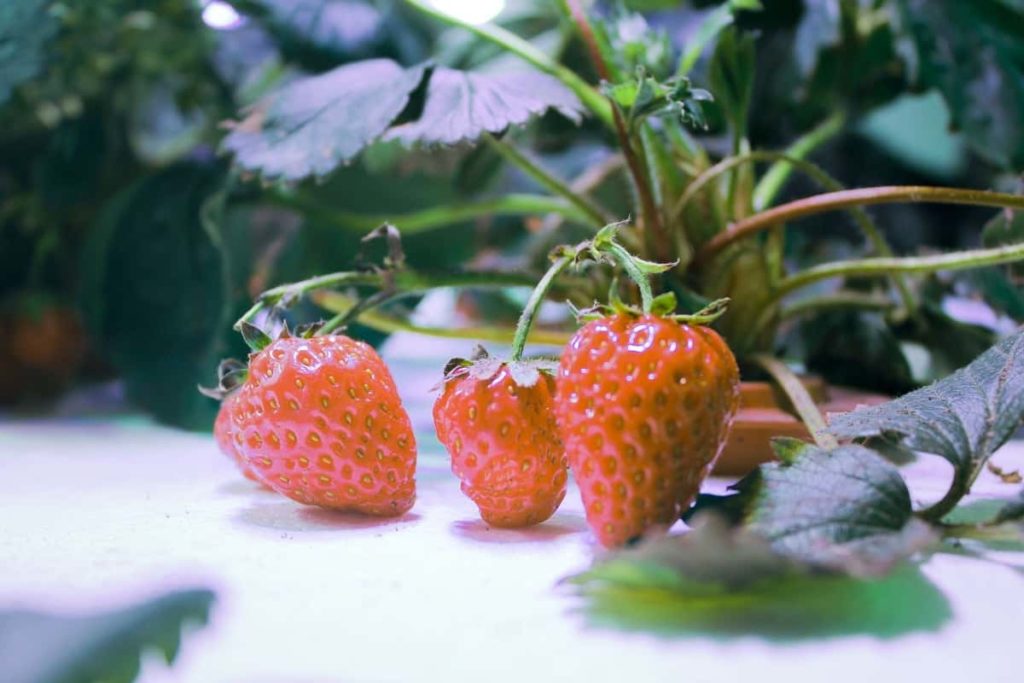
How often should I clean my hydroponic system?
- Be sure to clean your system after every grow cycle, even if growing a single crop.
- The hydroponic solution must be replaced when the excess volume of water equals the tank’s total volume. This step is usually done every two weeks to prevent the accumulation of nutrients and microorganisms such as fungi and bacteria.
- Also, homes with a hydroponic setup should be aware of important modifications to their plumbing system to streamline overall operations.
- Hydroponic growers generally use gate valves and ball valves. These valves can be made of plastic, chlorinated polyvinyl chloride (CPVC), polyvinyl chloride (PVC), galvanized steel, etc. The material of the valves affects the way the valves are attached to the hydroponic system. Most growers use plastic and PVC valves.
How successful is hydroponic farming?
The hydroponic plant growth rate is 30-60 times faster than soil-grown plants. It is because hydroponic plants are provided with abundant nutrients. The farmer can control all the components of the growing process, such as nutrition, heat, pests, and humidity.
Conclusion
Hydroponic growing is a great way to get fresh produce year-round. Hydroponics is the cultivation of plants without the use of soil. Flowers, herbs, and vegetables are planted hydroponics in passive growing media and supplied with nutrient solutions, oxygen, and water. This system promotes rapid growth, robust production, and high quality. The above information is a hydroponic plant growing conditions to maximize your yield.
- Economical Aquaculture: A Guide to Low-Budget Fish Farming
- 15 Common Planting Errors That Can Doom Your Fruit Trees
- How to Make Houseplants Bushy: Effective Tips and Ideas
- Innovative Strategies for Boosting Coconut Pollination and Yield
- Pollination Strategies for Maximum Pumpkin Yield
- The Complete Guide to Chicken Fattening: Strategies for Maximum Growth
- Natural Solutions for Tulip Problems: 100% Effective Remedies for Leaf and Bulb-Related Issues
- Revolutionizing Citrus Preservation: Towards a Healthier, Greener Future
- Natural Solutions for Peony Leaf and Flower Problems: 100% Effective Remedies
- Maximizing Profits with Avocado Contract Farming in India: A Comprehensive Guide
- Natural Solutions for Hydrangea Problems: 100% Effective Remedies for Leaf and Flowers
- The Ultimate Guide to Choosing the Perfect Foliage Friend: Bringing Life Indoors
- From Sunlight to Sustainability: 15 Ways to Use Solar Technology in Agriculture
- The Ultimate Guide to Dong Tao Chicken: Exploring from History to Raising
- The Eco-Friendly Makeover: How to Convert Your Unused Swimming Pool into a Fish Pond
- Mastering the Art of Delaware Chicken Farming: Essentials for Healthy Backyard Flocks
- 20 Best Homemade Fertilizers for Money Plant: DIY Recipes and Application Methods
- How to Craft a Comprehensive Free-Range Chicken Farming Business Plan
- Brighten Your Flock: Raising Easter Egger Chickens for Beauty and Bounty
- How to Optimize Your Poultry Egg Farm Business Plan with These Strategies
- Subsidy for Spirulina Cultivation: How Indian Government Schemes Encouraging Spirulina Farmers
- Ultimate Guide to Raising Dominique Chickens: Breeding, Feeding, Egg-Production, and Care
- Mastering the Art of Raising Jersey Giant Chickens: Care, Feeding, and More
- Ultimate Guide to Raising Legbar Chickens: Breeding, Farming Practices, Diet, Egg-Production
- How to Raise Welsummer Chickens: A Comprehensive Guide for Beginners
- How to Protect Indoor Plants in Winter: A Comprehensive Guide
- Ultimate Guide to Grow Bag Gardening: Tips, Tricks, and Planting Ideas for Urban Gardeners
- Guide to Lotus Cultivation: How to Propagate, Plant, Grow, Care, Cost, and Profit
- Agriculture Drone Subsidy Scheme: Government Kisan Subsidy, License, and How to Apply Online
- Ultimate Guide to Raising Araucana Chickens: Breed Profile, Farming Economics, Diet, and Care
- Bringing Hydroponics to Classroom: Importance, Benefits of Learning for School Students
- Ultimate Guide to Raising Polish Chickens: Breed Profile, Farming Economics, Diet, and Care
- Ultimate Guide to Raising Australorp Chickens: Profile, Farming Economics, Egg Production, Diet, and Care
- Silkie Chicken Farming: Raising Practices, Varieties, Egg Production, Diet, and Care
- Sussex Chicken Farming: Raising Practices, Varieties, Egg Production, Diet and Care
- Homemade Feed Formulations for Livestock: Discover Cost-effective Starter to Finisher Feed Recipes